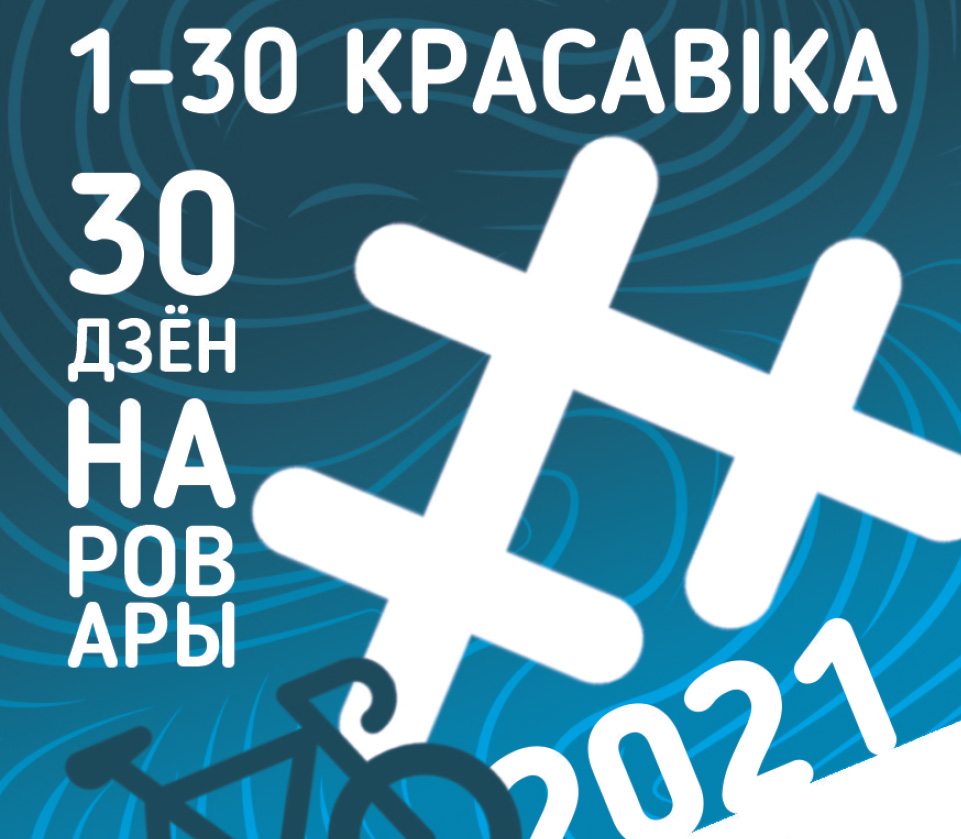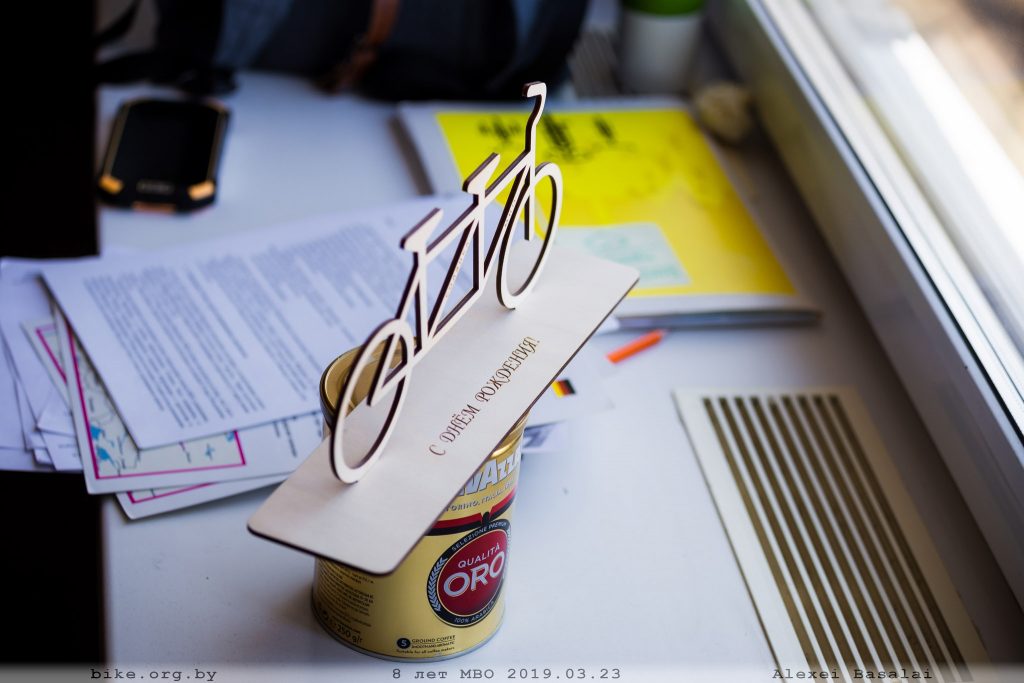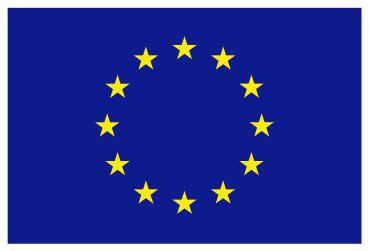Brest has a chance to become the first in the development of cycling in the country. For this, the city has everything it needs: a relatively warm climate, compactness, a stable base of bike enthusiasts and the assistance of local authorities. Brest became the second city after Minsk, where in November a large cycling forum "PraRovar" took place. At the event, they talked about the successes of the city.
Brest has a chance to become the first in the development of cycling in the country. For this, the city has everything it needs: a relatively warm climate, compactness, a stable base of bike enthusiasts and the assistance of local authorities.
Brest became the second city after Minsk to host a major cycling forum in November "PraRovar"... At the event, they talked about the successes of the city.
A bicycle in every second Brest family
In Brest, about 4,000 people regularly use a bicycle to get around. Every second family has at least one bicycle. As the chairman of the board of the organization noted in his speech "For Velo Brest" Vladimir Krasko, these figures are growing from year to year.
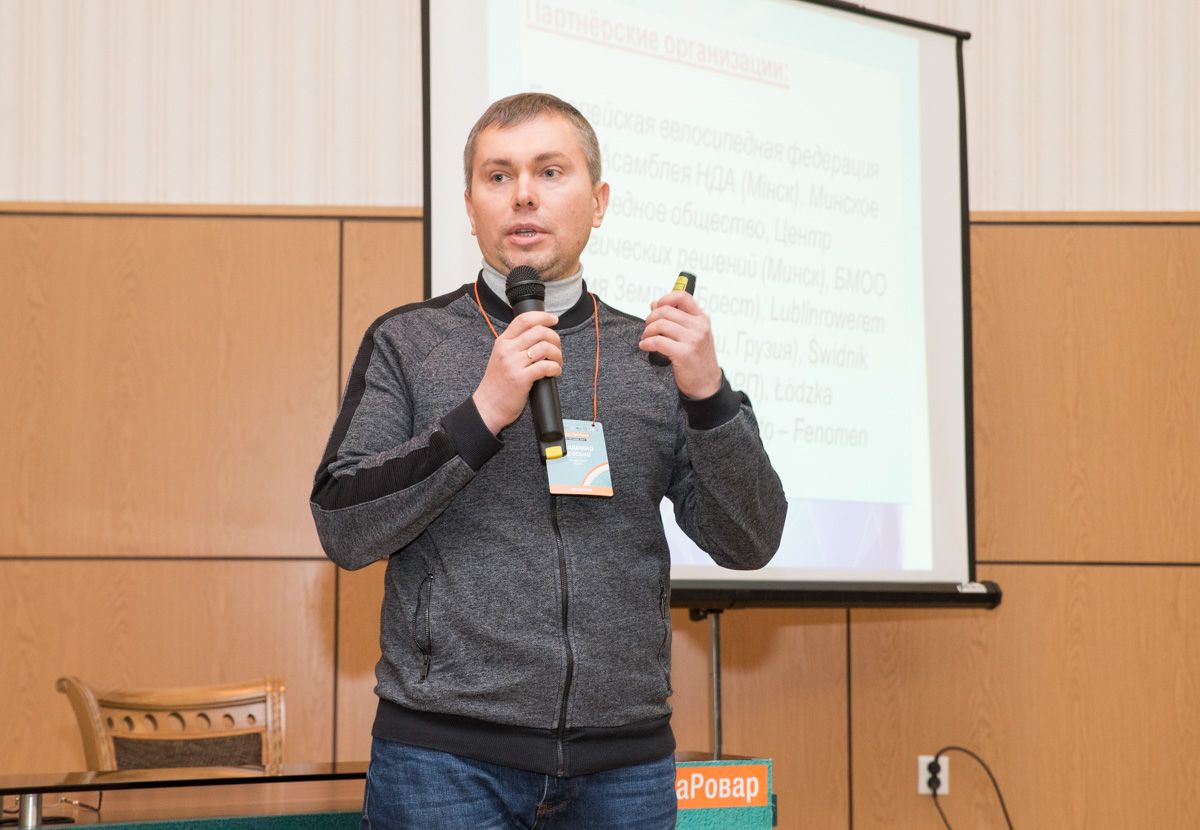
Photo: Denis Zelenko
- We have support in the city executive committee. It appeared not so long ago, let's be honest ... Plus good relationship with the traffic police, - Vladimir confirmed.
Considering that the first day of the forum was held in the building of the Brest City Executive Committee, there is no doubt in the words of the activist.
Minsk is not resolved, but Brest has implemented
In January 2018, an important event happened - the The concept of the development of cycling in the Republic of Belarus... The Brest region has its own development plan... The document prescribes the creation of working groups for the development of cycling, the creation of concepts and action plans, the adaptation of existing roads for cycling, etc. An important point is that the working groups "should include public associations of cyclists and cycling activists."
Although according to the chairman of the board Minsk Cycling Society Pavel Gorbunov this concept is declarative in nature, the presence of such a document is better than nothing: it is more customary for officials to act within the framework of the outlined tasks. The next step is to turn the concept into a more concrete development plan.
Some of the work has already been done. Together with foreign experts, the Minsk Cycling Society and Za Velo Brest have developed a concept for the development of cycling in the city and a specific plan bike paths.
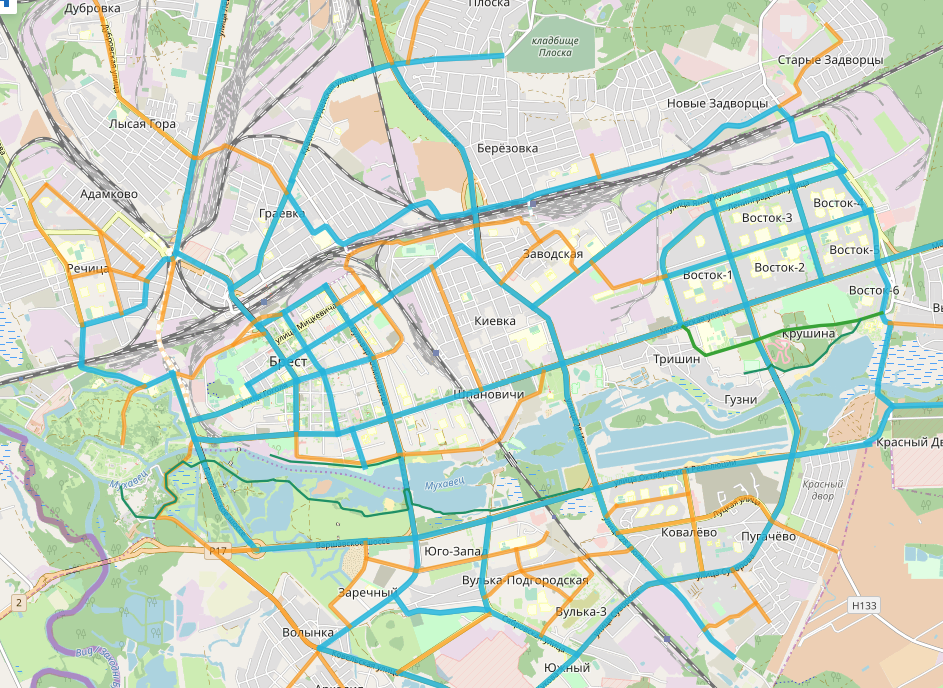
In Brest, bicycle crossings have begun to appear for cyclists to cross the roadway without dismounting. According to Vladimir Krasko, after the reconstruction of roads, such crossings appear at almost every intersection.
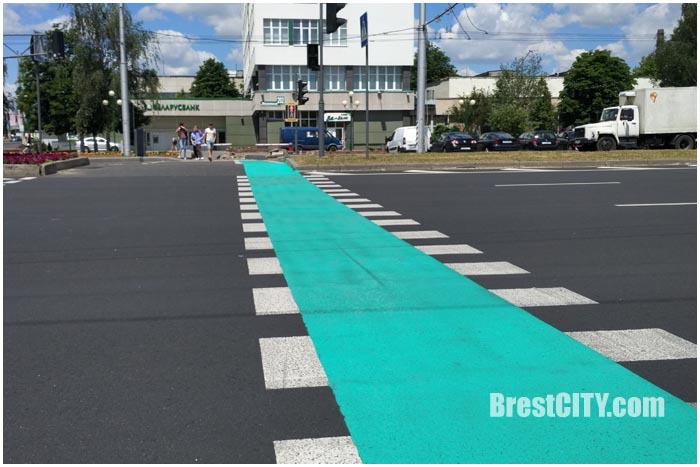
Photo: BrestCity.com
The curbs are lowered on the main bicycle arteries. At the same time, during the reconstruction, they stopped using curb "fill". Understatement occurs by lowering the curb itself.
In Brest, finally, they did something that the authorities of Minsk cannot decide on: already several streets have a cycle path on the carriageway.

Photo: gomel.today
In the general plan of the city there is a cycle ring, partially combined with trolleybus traffic. But so far, motorists are hindering the peaceful coexistence of two types of environmentally friendly transport on the road: improperly parked cars force trolleybuses to enter the cycle path. While the operation of the ring is suspended, Za Velo Brest is negotiating with the trolleybus fleet to resolve the problem.
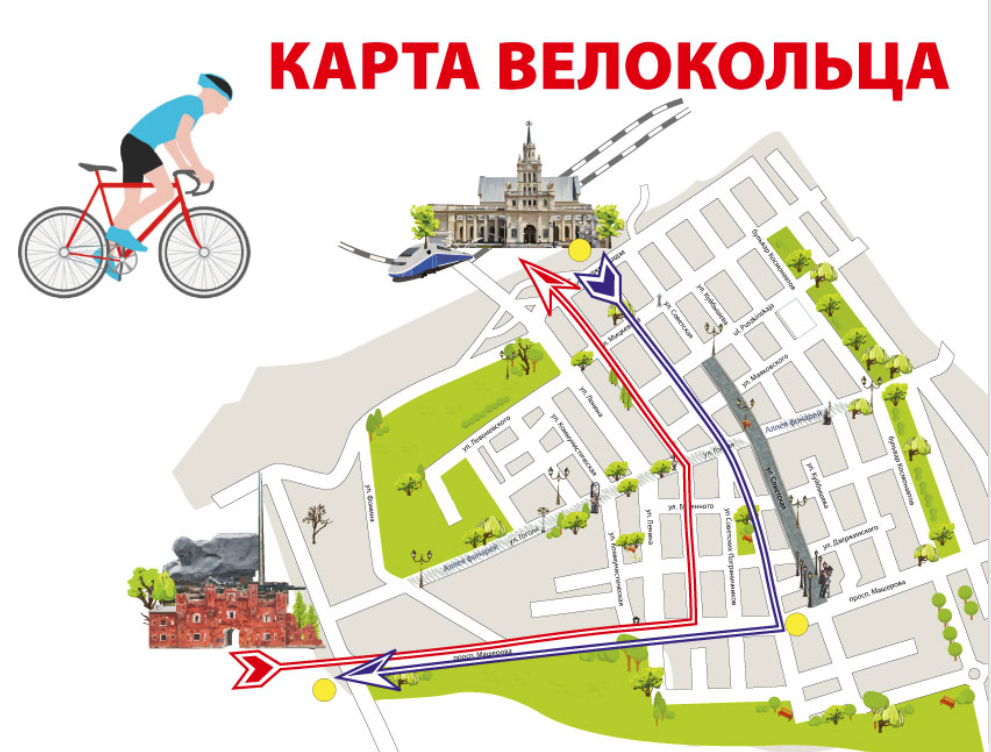
Photo from the presentation of Vladimir Krasko
The annual results of the activities of the organization "For Velo Brest" look worthy:
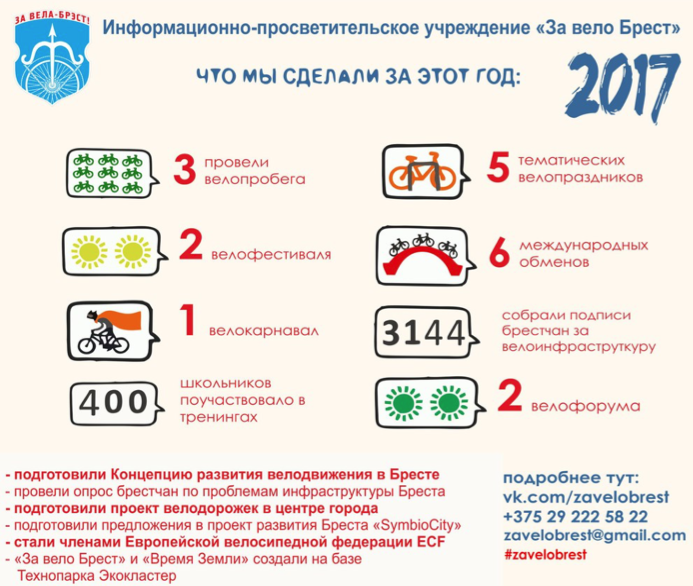
Photo from the presentation of Vladimir Krasko
The main wish of Vladimir Krasko sounds simple: when accepting the bicycle infrastructure, a representative of the bicycle movement must be present.
Talatai is here, Talatai is there
There is a person in Brest with a unique experience of work “on both sides of the barricades” - the former head of the traffic police of the Brest region Sergey Talatay, now - the head of the transport mobility group of the “SymbioCity” project at the Brest city executive committee.
- Today, the approaches to the design of cities are changing. Now it is no longer the state competing for resources, but cities are beginning to compete with each other for human resources and investment. The more attractive the city and its environment, the more interesting it is for specialists who can come here and work, - says Sergey Talatay.
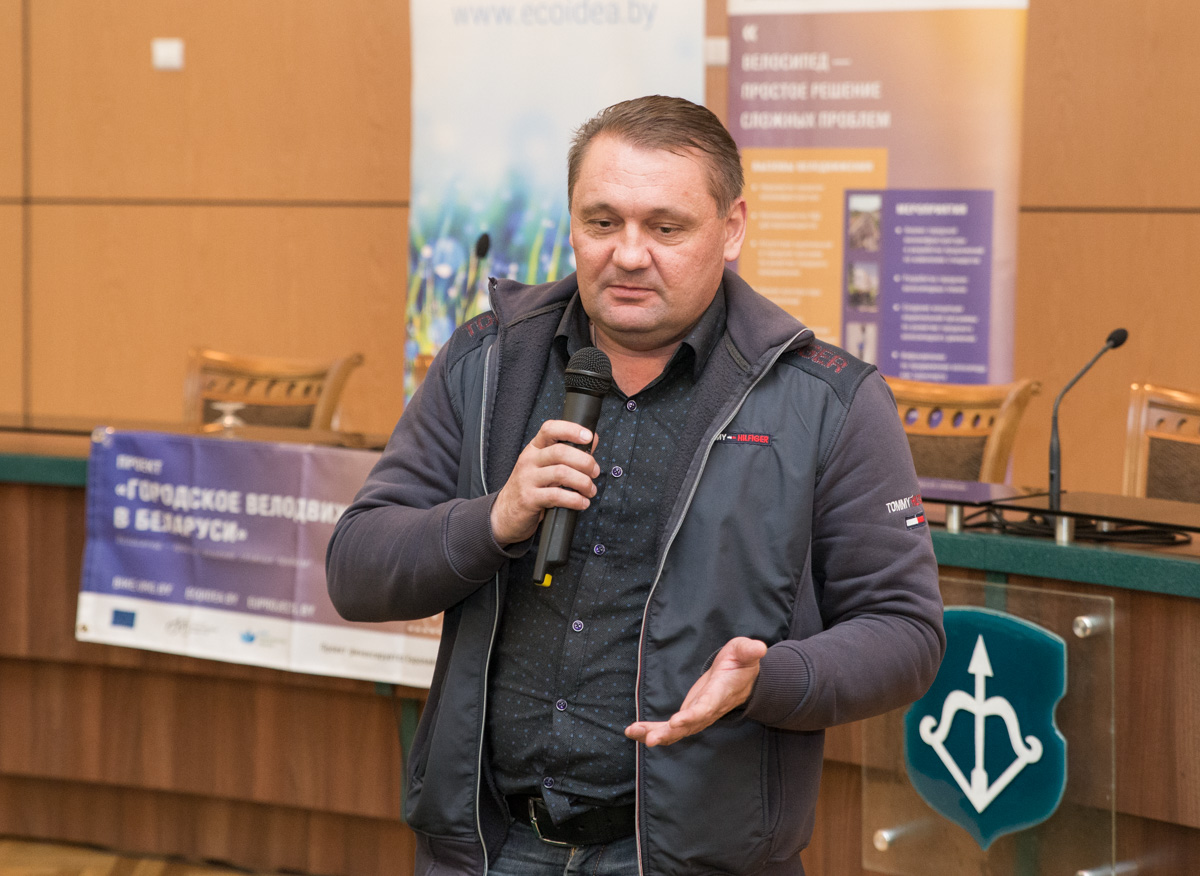
According to the expert, the fact that the forum is held in the city executive committee, where public organizations communicate with the city authorities, indicates that there is a constructive dialogue and a desire to communicate, to move forward.
- If we compare the activities of different NGOs, the Brest cycling community is the most active and consolidated, Sergei Talatay is convinced.
"SymbioCity" Is one of the major projects under the National Action Plan for the Development of a Green Economy in Belarus until 2020. For Brest, it provides several components, including the first in the country service short-term bike rental and the creation of a network of bike paths.
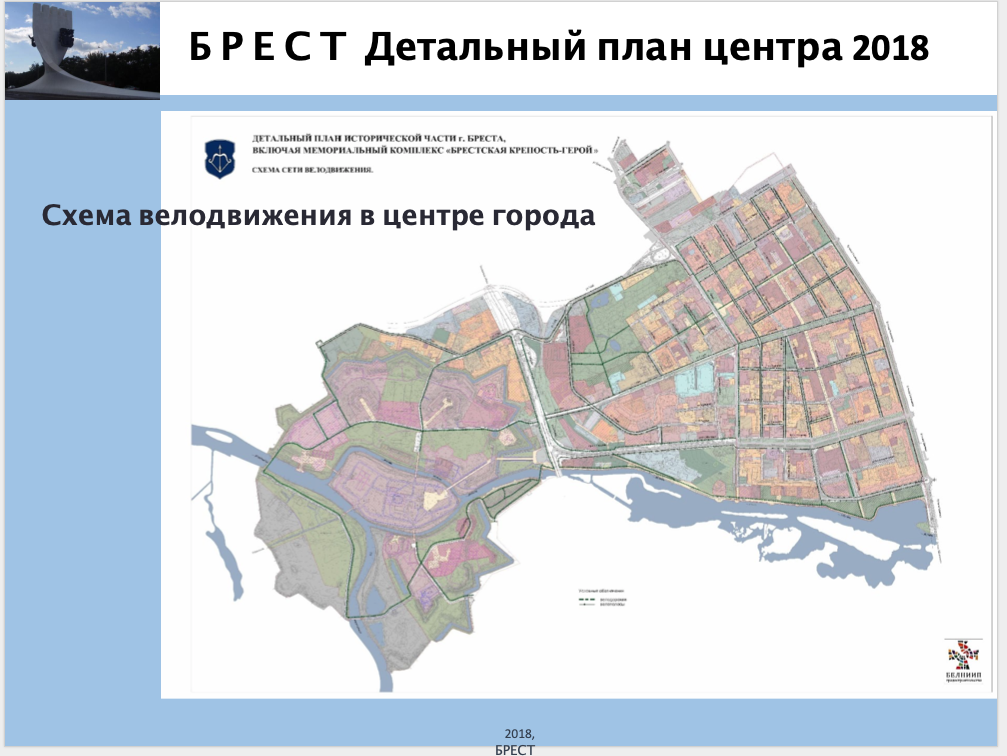
Photo from the presentation of Vladimir Krasko
By words Sergey Talatay, the developers have chosen the theme of "compact city", which increases the possibilities for improvement and mobility. The cycling scheme in the city center is laid down in the town planning documentation.
In Brest, a survey of residents was conducted with the question - “What would you like to associate the city with tomorrow - green, cycling, modern? The development of cycling infrastructure turned out to be a priority. These results were taken as the basis for the design of the detailed and master plan.
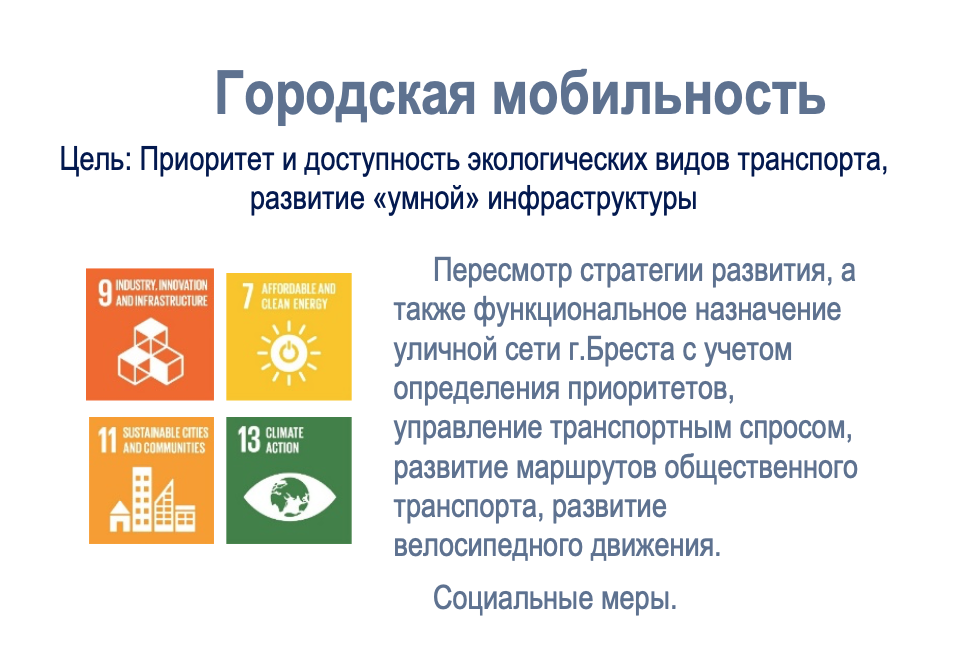
Photo from the presentation of Vladimir Krasko
In addition to some problems with the introduction of bicycle paths on the roadway, Brest in the near future needs to solve a number of bicycle problems: the creation of recreational routes and opening border crossing Brest-Terespol for the movement of cyclists. In the meantime, the international trans-European route “EuroVelo-2”, which could attract a lot of cyclists to the country, runs into the border of Belarus, ending in the most illogical way.
The material was prepared within the framework of the Urban Cycling in Belarus project with financial support from the European Union and within the deVELOpment campaign with the assistance of the US Embassy in Belarus.
Text: Denis Zelenko


